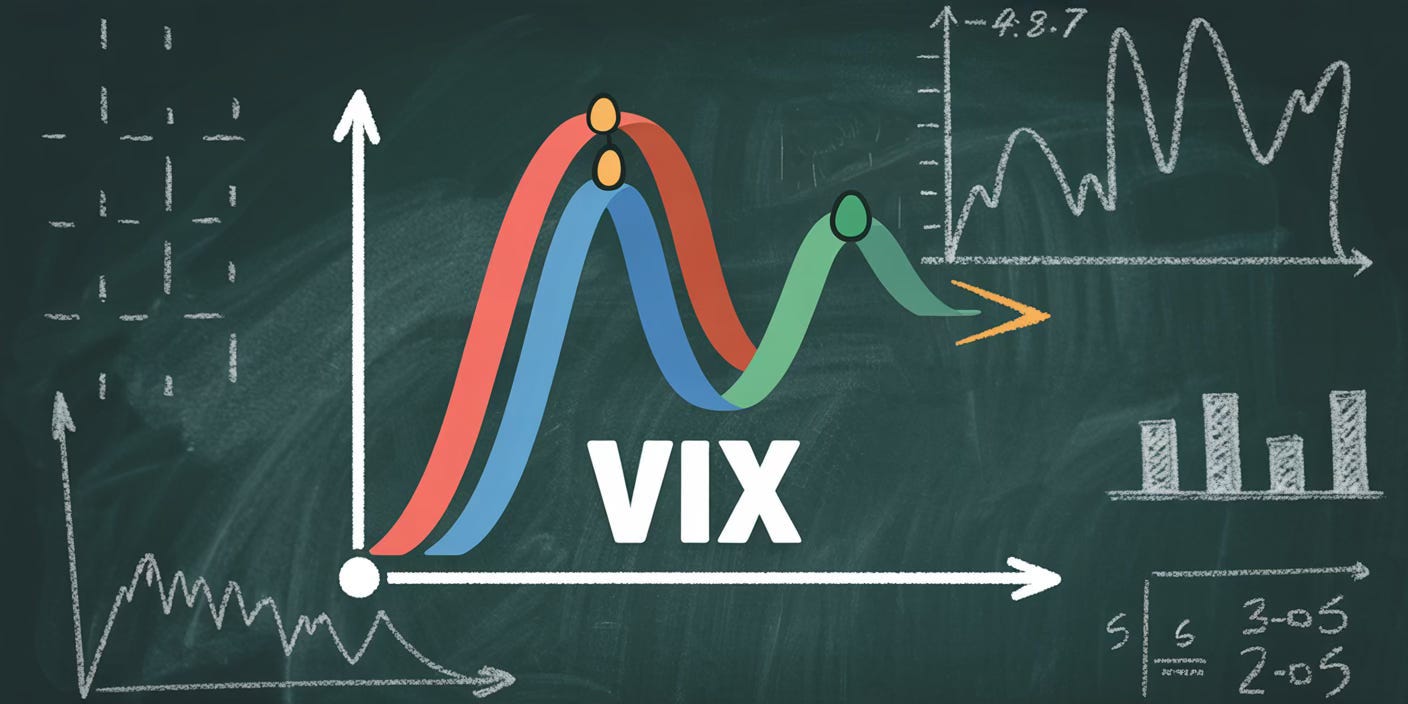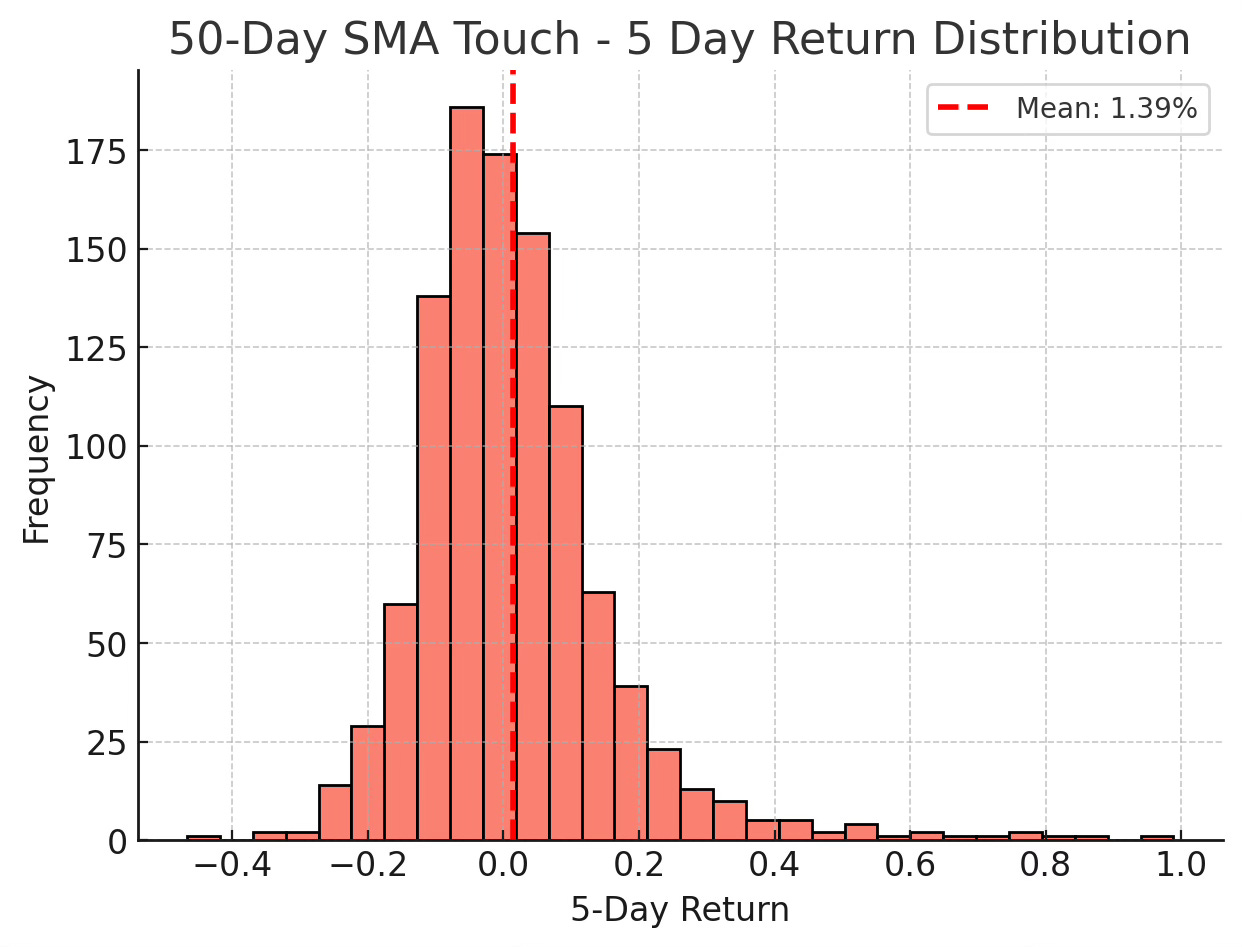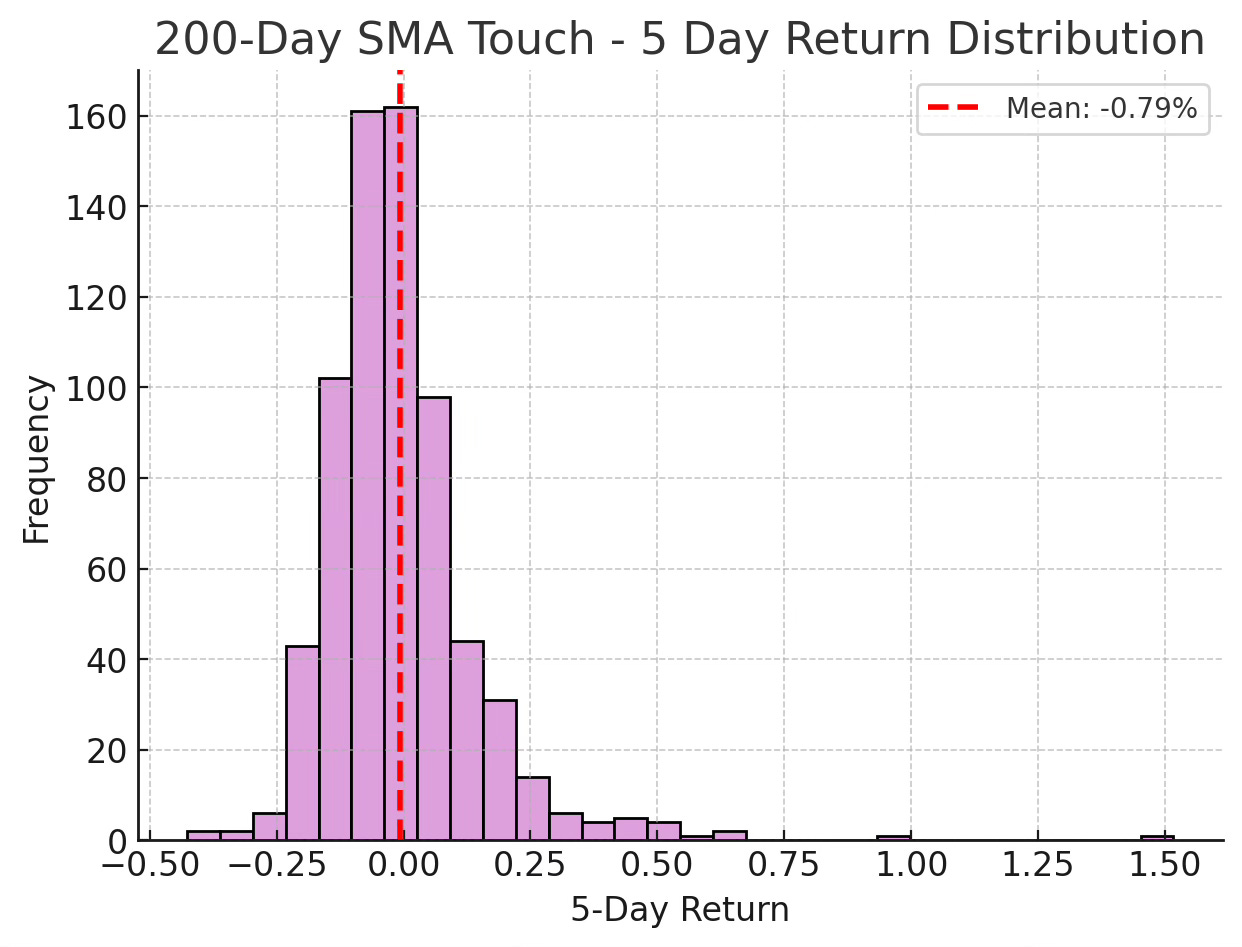What Happens When the VIX Touches Its Moving Averages?
The VIX, often called the “fear gauge,” doesn’t behave like a stock or ETF. It’s a mean-reverting index that oscillates around a long-term average near 19–20. One way traders study its behavior is by looking at what happens when the VIX touches key moving averages.
We tested the 5-, 10-, 20-, 50-, and 200-day simple moving averages (SMAs) from 1990 to 2025 and tracked the performance afterward.
Key Statistics for Each SMA Touch
5-Day SMA
Occurrences: 2,601
Average next-day return: +0.10%
Average 1-week return: +1.05%
1-day outcomes: 46% positive / 53% negative
1-week outcomes: 46% positive / 54% negative
Median days to revert: 3
Average days to revert: ~3.5
Avg VIX level at touch: ~19.3
Very frequent — roughly once every 3–4 trading days. Quick reversion in about 3 days.
10-Day SMA
Occurrences: 1,938
Average next-day return: +0.33%
Average 1-week return: +1.06%
1-day outcomes: 46% positive / 54% negative
1-week outcomes: 46% positive / 54% negative
Median days to revert: 3
Average days to revert: ~4.6
Avg VIX level at touch: ~19.0
Slightly stronger short-term drift than the 5-day, but still mean-reverts in under a week.
20-Day SMA
Occurrences: 1,448
Average next-day return: +0.19%
Average 1-week return: +0.72%
1-day outcomes: 46% positive / 53% negative
1-week outcomes: 47% positive / 53% negative
Median days to revert: 3
Average days to revert: ~6.2
Avg VIX level at touch: ~18.9
Touches are less frequent, and the VIX tends to hover longer before reverting.
50-Day SMA
Occurrences: 1,046
Average next-day return: +0.01% (flat)
Average 1-week return: +1.39%
1-day outcomes: 43% positive / 57% negative
1-week outcomes: 48% positive / 51% negative
Median days to revert: 3
Average days to revert: ~8.6
Avg VIX level at touch: ~18.5
Signals happen ~28 times per year. They linger longer, with mean reversion stretching toward 2 weeks.
200-Day SMA
Occurrences: 689
Average next-day return: –0.33%
Average 1-week return: –0.79%
1-day outcomes: 43% positive / 56% negative
1-week outcomes: 39% positive / 61% negative
Median days to revert: 3
Average days to revert: ~12.7
Avg VIX level at touch: ~18.3
Rare — only about 19 per year. These touches usually occur when VIX is calm. Reversions are the slowest, averaging over 2 weeks.
Day-to-Day Predictability
Across all moving averages:
Next-day predictability is weak. None of the SMAs show more than ~46% positive outcomes; the VIX is nearly a coin flip the next day.
One week later: There’s a slight bias toward negative outcomes, especially at the 200-day SMA, where the VIX is lower about 61% of the time.
Reversion speed scales with length: Short averages (5- and 10-day) revert in under a week. Longer ones (50- and 200-day) take 2+ weeks.
Can Traders Use This Information?
Not as a trend signal. Unlike stocks, where moving average touches can signal momentum, the VIX’s touches mainly highlight its mean-reverting nature.
Short-term bias is weak. The day-to-day edge is minimal — less than 55% probabilities either way.
Longer averages matter more. Touching the 200-day SMA often signals a calming period, with a bias toward declines in the following week.
Practical use case: These stats are more useful as a context tool than as a direct trading signal. Traders in equities or options might see a VIX SMA touch as a sentiment checkpoint rather than a buy/sell trigger.
Conclusion
When the VIX touches its moving averages, the response is muted and highly mean-reverting:
The shorter the moving average, the more frequent and faster the reversion.
The longer the moving average, the rarer and slower the reversion — but with a clearer bias toward declining volatility afterward.
For traders, these signals are best viewed as context about market fear returning toward normal, not as actionable “buy volatility” opportunities.







